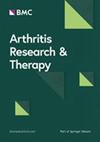Blood gene expression of Toll-like receptors in SLE patients with lupus nephritis or neuropsychiatric systemic lupus erythematosus
IF 4.9
2区 医学
Q1 Medicine
引用次数: 0
Abstract
To determine differences in the blood innate gene expression signatures of systemic lupus erythematosus (SLE) patients across various organ manifestations and disease activity, with a focus on lupus nephritis (LN) and central nervous system (CNS) involvement. Toll-like receptor family (TLR 1–10) mRNA expression was investigated in peripheral blood mononuclear cells from patients with SLE (n = 74) and healthy controls (n = 34). We compared patients with histologically confirmed active LN or neuropsychiatric systemic lupus erythematosus (NPSLE) with patients without these symptoms. The expression of TLR mRNA was determined by RT‒qPCR using a high-throughput SmartChip Real-Time-qPCR system (WaferGen). Multivariate analysis and nonparametric statistics were used for data analysis to assess the associations between TLRs and disease activity and severity. TLR4 (0.044 vs. 0.081, p = 0.012) was upregulated and TLR10 (0.009 vs. 0.006, p = 0.0007) was downregulated in the whole cohort of SLE patients compared to healthy controls. A comparison of the active LN group with participants without kidney involvement revealed increased expression of TLR2 (0.078 vs. 0.03, p = 0.009), and TLR5 (0.035 vs. 0.017, p = 0.03). Moreover, a significant difference was observed in TLR9 expression between inactive LN and the control group (0.014 vs. 0.009, p = 0.01), together with borderline correlation in TLR2 expression (0.04 vs. 0.03, p = 0.06). Receiver operating characteristic (ROC) curve analysis revealed that TLR1 and TLR2 expression were the best potential diagnostic markers for active LN. The NPSLE group showed upregulation of TLR1 (0.088 vs. 0.048, p = 0.01), TLR4 (0.173 vs. 0.066, p = 0.0003) and TLR6 (0.087 vs. 0.036, 0.007). Our correlation analysis supported the close relationships among the expression of individual TLRs in the whole lupus cohort and its subgroups. Our study revealed differences in TLR expression between a lupus cohort and healthy controls. Additionally, our analysis provides insight into specific TLR expression in cases with severe organ manifestations, such as LN and NPSLE. The multiple mutual relationships of TLRs demonstrate the activation of innate immunity in SLE and suggest promising targets for future therapies or diagnostics.SLE合并狼疮肾炎或神经精神系统性红斑狼疮患者血液中toll样受体的基因表达
确定系统性红斑狼疮(SLE)患者不同器官表现和疾病活动性的血液先天基因表达特征差异,重点关注狼疮肾炎(LN)和中枢神经系统(CNS)受累情况。研究了SLE患者(n = 74)和健康对照(n = 34)外周血单个核细胞中toll样受体家族(TLR 1-10) mRNA的表达。我们比较了组织学证实的活动性LN或神经精神系统性红斑狼疮(NPSLE)患者与没有这些症状的患者。采用高通量SmartChip Real-Time-qPCR系统(WaferGen)进行RT-qPCR检测TLR mRNA的表达。采用多变量分析和非参数统计进行数据分析,以评估tlr与疾病活动性和严重程度之间的关系。与健康对照组相比,整个SLE患者队列中TLR4 (0.044 vs. 0.081, p = 0.012)上调,TLR10 (0.009 vs. 0.006, p = 0.0007)下调。活动性LN组与未受累肾脏组的比较显示TLR2 (0.078 vs. 0.03, p = 0.009)和TLR5 (0.035 vs. 0.017, p = 0.03)的表达增加。此外,TLR9在失活LN组与对照组的表达差异有统计学意义(0.014 vs. 0.009, p = 0.01), TLR2表达呈临界相关性(0.04 vs. 0.03, p = 0.06)。受试者工作特征(ROC)曲线分析显示,TLR1和TLR2表达是活动性LN的最佳潜在诊断指标。NPSLE组TLR1(0.088比0.048,p = 0.01)、TLR4(0.173比0.066,p = 0.0003)、TLR6(0.087比0.036,0.007)表达上调。我们的相关分析支持了整个狼疮队列及其亚组中个体tlr表达之间的密切关系。我们的研究揭示了狼疮患者与健康对照组之间TLR表达的差异。此外,我们的分析提供了TLR在严重器官表现(如LN和NPSLE)病例中的特异性表达。tlr的多重相互关系证明了SLE中先天免疫的激活,并为未来的治疗或诊断提供了有希望的靶点。
本文章由计算机程序翻译,如有差异,请以英文原文为准。
求助全文
约1分钟内获得全文
求助全文
来源期刊

Arthritis Research & Therapy
RHEUMATOLOGY-
CiteScore
8.60
自引率
2.00%
发文量
261
审稿时长
14 weeks
期刊介绍:
Established in 1999, Arthritis Research and Therapy is an international, open access, peer-reviewed journal, publishing original articles in the area of musculoskeletal research and therapy as well as, reviews, commentaries and reports. A major focus of the journal is on the immunologic processes leading to inflammation, damage and repair as they relate to autoimmune rheumatic and musculoskeletal conditions, and which inform the translation of this knowledge into advances in clinical care. Original basic, translational and clinical research is considered for publication along with results of early and late phase therapeutic trials, especially as they pertain to the underpinning science that informs clinical observations in interventional studies.
 求助内容:
求助内容: 应助结果提醒方式:
应助结果提醒方式:


